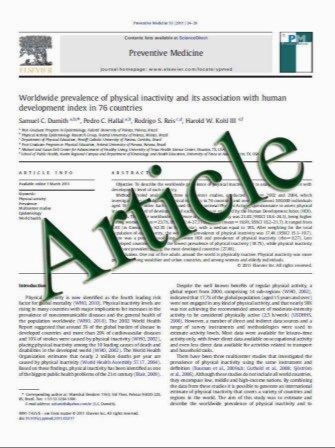Sonographic measurement of iliotibial band thickness: an observational study in healthy adult volunteers
- نوع فایل : کتاب
- زبان : انگلیسی
- مؤلف : Ibrahim A. Gyaran • Filippo Spiezia • Zoe Hudson • Nicola Maffulli
- چاپ و سال / کشور: 2010
Description
Purpose Iliotibial tract friction syndrome (ITBFS) might be caused by repetitive friction and abrasion of the iliotibial (ITB) tract across the lateral femoral epicondyle. Thickening in the ITB adjacent to the lateral femoral epicondyle has been reported. The values of ITB thickness at the lateral femoral epicondyle in healthy adult volunteers were determined, and the association between the thickness of the ITB and the subjects’ age, weight, height, dominant limb and the volume of training or sporting activity was assessed. Methods An Ultrasound Scan (high resolution 3–2 MHz transducer Voluson-i G E Medical Systems, UK) was used to measure the thickness of the ITB in 38 healthy volunteers (30 men and 8 women, mean age 22.5 ± 1.5 years, range 18–25 years). One measurement from each of the subjects’ knees at the level of lateral femoral epicondyle was taken. Reliability was established by measuring 11 of the subjects on three separate occasions at least I week apart. Results The thickness of the ITB on the right and left knees was 1.1 ± 0.2 mm. There was no evidence of a significant association between the thickness of the ITB and the subjects’ age, weight, height, dominant limb and the volume of training or sporting activity. Conclusions There is no evidence of significant correlation between the thickness of the ITB and subjects’ age, weight, height, dominant limb and volume of training or sporting activity.
Knee Surg Sports Traumatol Arthrosc (2011) 19:458–461 DOI 10.1007/s00167-010-1269-z Received: 27 November 2009 / Accepted: 7 September 2010 / Published online: 2 October 2010


